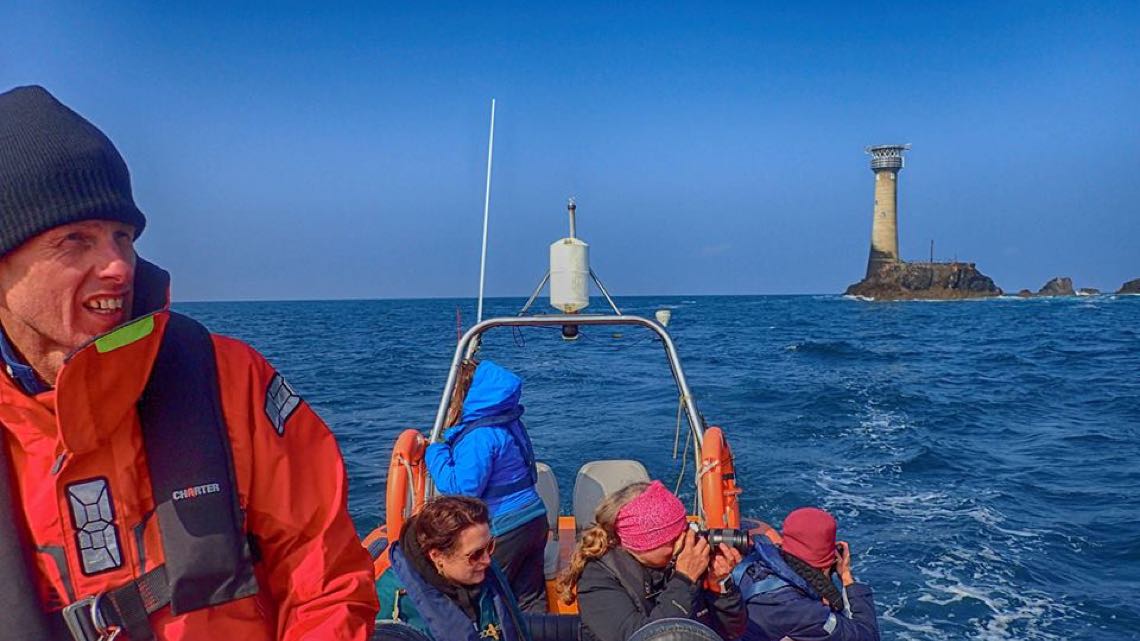
We visit the iconic Longships Lighthouse on our 3-hour Wildlife Watching Tour and often see grey seals basking on the rocks. Here’s a brief history of the lighthouse…
Longships Lighthouse was built by Trinity House in 1875 to replace a shorter tower built upon rocks at the extreme south-west of Britain’s mainland
The headland is encircled by rocks upon which countless ships have been lost in heavy seas or during poor visibility.
In 1790 the area was devoid of aids to navigation and the coast dwelling communities were said to gain some benefit from salvaging the contents of vessels driven on to the rocks, a practice known as ‘wrecking’.
On 30 June 1791 Trinity House obtained a patent after lodging a petition from seafarers and gave a lease to Lieutenant Henry Smith by which he would erect a lighthouse on the Longships; the 50 year lease fixed the rental at £100.
A tower was soon established on Carn Bras, the largest of the Longships Rocks which rose 12m above high tides. The circular tower, designed by Trinity House architect Samuel Wyatt, had three storeys; the lowest contained water tanks and stores, the next formed a living room and the lighthouse keepers used as a bedroom the top storey under the wood and copper lantern. The lantern was elevated 24m above the sea, and held 18 parabolic metal reflectors and Argand lamps, arranged in two tiers; metal sheets blocked the windows in the landward direction.
Soon after lighting the tower on 29 September 1795, Smith was declared “incapable of managing the concern“. Trinity House took it over and remitted the profits to his family through the Court of Chancery. The lighthouse keepers on the Longships led a modest existence, cooking their meals in the lantern by the Argand lamps. The lighthouse was manned by four men, two of whom were on station at any one time, working one month at a stretch. They received £30 per annum and free food at the lighthouse, but when ashore they provided for themselves and had to take what additional employment they might find.
In 1836 the Corporation was empowered to buy out the nation’s remaining private lighthouses, and duly bought out the lessees for £40,676 inclusive of life rents.
From the terrific seas which swept over the rock during storms, the lantern was so often obscured by water that the character of a fixed light could not be determined with certainty. This eclipse by the waves was the reason given for the replacement of Wyatt’s tower by the present circular tower of grey granite built by Sir James Douglass, Trinity House’s Engineer-in-Chief, in 1875.
Longships Lighthouse was automated in 1988 and is now monitored and controlled from Trinity House’s Planning Centre in Harwich, Essex.